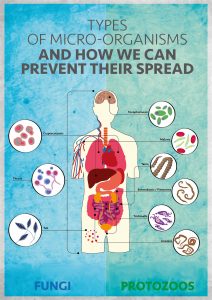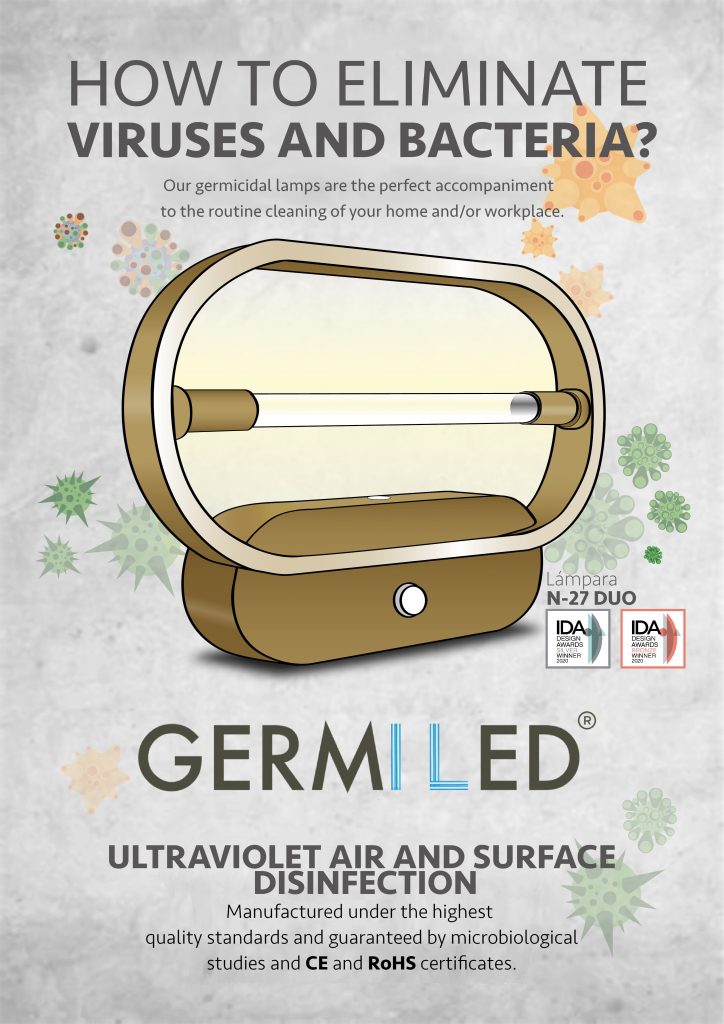In the previous post we mentioned several of the most common viruses and bacteria, some of them transmitted by vectors, living organisms that act as a vehicle of infectious agents from an infected animal to a human being or to another animal.
This time we will focus on mentioning several diseases caused by fungi and parasites.
PART 2: FUNGI AND PARASITES
FUNGI
They are everywhere, very ubiquitous, and too small to be perceived with the naked eye. They can live outdoors, in soil or plants, and indoors, on surfaces, in the air, even inside the body, many of them live on our skin and are part of our flora. However, with the lowering of the body’s defenses there is the possibility that they can change form being beneficial to being harmful, causing various illnesses
- Candida, yeast, which causes candidiasis. It normally lives with us without causing us any problems.
- Cryptococcosis: found in soil and pigeon feces.
- Aspergillosis.
- Ringworm: affects the skin and scalp.
Anyone can get a fungal infection, even people with no other conditions, but in people with weakened immune systems these fungi are more likely to cause problems and complications.

PARASITES
- Protozoa:
Capable of multiplying in people, allowing them to survive and develop serious infections. The habitat of protozoa is very broad. Those that affect our intestine can be transmitted to another person through the fecal-oral route. Those affecting the blood or tissues are usually transmitted through an arthropod vector.
-
- Amebiasis, can affect anyone, although it is more common in people living in tropical areas with poor sanitary conditions.
- Giardiasis, very common among children, as it is spread by contaminated food or water or surfaces (toys, changing tables).
- Toxoplasmosis, transmitted through cat feces or contaminated food. It is especially important to control it during pregnancy because of the neurological alterations it can cause in the fetus (even if the mother is asymptomatic).
- Leishmaniasis: it is spread all over the world.
- Malaria: can affect us if we travel to affected areas.
- Helminths or worms:
Organisms that when they are adults can normally be seen with the naked eye.
-
- Taeniasis is an intestinal infestation. It is contracted by eating undercooked contaminated beef or pork.
- Giardiasis, very common among.
- Enterobiasis is also an intestinal infestation that generally affects children and their environment. Eggs can survive, and thus infect us through infected hands, bedding, toys, or bathrooms.
In order to prevent these diseases, the most important thing is to maintain proper hygienic habits both personally and professionally:
- Hand washing (especially before handling food).
- Proper cleaning of homes (domestic environment).
- Pay special attention to the cleanliness of the machinery used to process food (meat mincers and cutting machines in butcher shops) and in veterinary environments (professional environment).
Germiled offers you germicidal products adapted to your needs to combat the transmission of the various diseases that put your health at risk.

